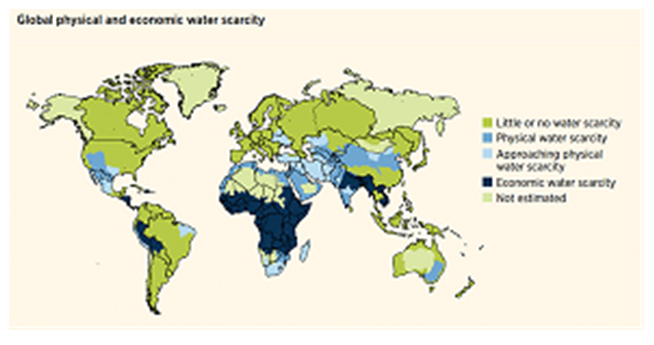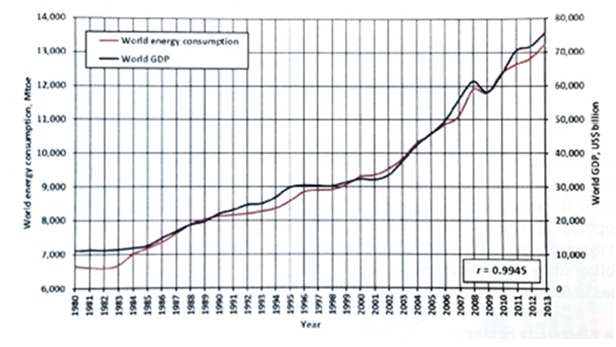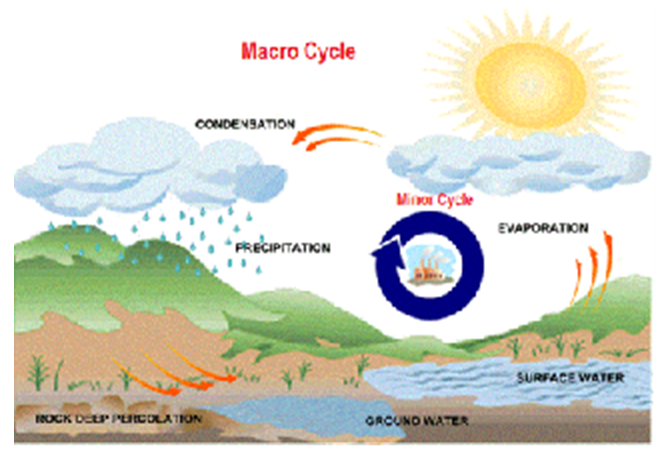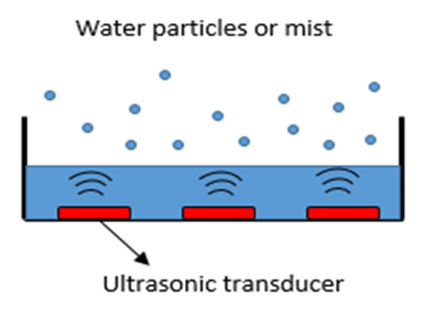-
Paper Information
- Paper Submission
-
Journal Information
- About This Journal
- Editorial Board
- Current Issue
- Archive
- Author Guidelines
- Contact Us
American Journal of Environmental Engineering
p-ISSN: 2166-4633 e-ISSN: 2166-465X
2020; 10(1): 9-12
doi:10.5923/j.ajee.20201001.02

Minor Water Cycle as Water Crisis Solution
A. Bakhtiari1, T. Berberashvili1, A. Davitashvili2, D. Gurgenidze2, P. Kervalishvili1, L. Klimiashvili2
1Engineering Physics Department, Georgian Technical University, Tbilisi, Georgia
2Civil Engineering Department, Georgian Technical University, Tbilisi, Georgia
Correspondence to: A. Bakhtiari, Engineering Physics Department, Georgian Technical University, Tbilisi, Georgia.
| Email: |  |
Copyright © 2020 The Author(s). Published by Scientific & Academic Publishing.
This work is licensed under the Creative Commons Attribution International License (CC BY).
http://creativecommons.org/licenses/by/4.0/

Nowadays, water scarcity is one of the most important subject that many scientists are involved. On the other hand, environment pollution is another worrying problem what increase water scarcity via resources pollution. Both effect on human live, then finding comprehensive alternative is inevitable. Natural hydrologic water cycle (Macro Cycle) investigation shows nature provide comprehensive solution as natural cycle what could be imitated as reusing processed water that is called minor cycle. Today, common treatment processes could not be feasible as a standard way and then most of consumers refuse it. But innovative design and treatment elements arrangement in a process beside new technologies, can provide comprehensive solutions via minor cycle doctrine.
Keywords: Water crisis, Macro cycle, Minor cycle, Reusing water, Water scarcity, Water resources pollution
Cite this paper: A. Bakhtiari, T. Berberashvili, A. Davitashvili, D. Gurgenidze, P. Kervalishvili, L. Klimiashvili, Minor Water Cycle as Water Crisis Solution, American Journal of Environmental Engineering, Vol. 10 No. 1, 2020, pp. 9-12. doi: 10.5923/j.ajee.20201001.02.
Article Outline
1. Introduction
- To importance of water, it is shown on the maps since ancient times civilization has depended on fresh water resources and all of the civilizations were established water resources nearby. However, water transmission technology changed features today, but the concept is same. At the same time, freshwater resources restriction on the earth; about 3% of whole water resources, beside non-uniform distribution, population and industries growth, need a serious approach to optimized resources management.Nowadays, water scarcity (An area is experiencing water stress when annual water supplies drop below 1,700 m3 per person. When annual water supplies drop below 1,000 m3 per person, the population faces water scarcity, and below 500 cubic meters "absolute scarcity") is one the most serious problem in the world that many organizations are involved to find suitable alternatives. It changes not only environment, but also effect on societal-economic factors, how UN secretary mentioned, "All are places where shortages of water contribute to poverty. They cause social hardship and impede development. They create tensions in conflict-prone regions" [1].Of course, scarcity has different features as Physical and Economical. Physical scarcity depends on fresh water scarcity that 17% of world population have involved and 7% are close it. Economical scarcity refers to lack of water jobs facilities, then lack of fresh water access what 23% of world population are involved [1].Beside physical and economical scarcities, fix amount of fresh water resources pollution by human is significant, what makes lack of fresh water too. On the other hand, refer to water role in the world, as a carrier media should be observed; because it can transfer impurities, then wastewater management is also significant to prevent resources pollution.
 | Figure 1. Water scarcity map in the world [1] |
2. Water Economy Definition and Aspects
2.1. Water Economy
- Refer to Merriam Webster dictionary, economy means thrifty and efficient use of material resources. Thrifty and efficient consumption, consider to finite amount of resources that water on the earth is consisted too.Obviously, as a vital substance, it is necessary for all of the creatures, then it should nourish all of them in the water cycle to make ecosystem. On the other hand, there are different indirect water consumption like agriculture, food industries, power plants and etcetera that make water cycle elements what should be observed too. Then, water economy is defining:“The analysis of elements that influence water demand management and their socioeconomic and environmental impact, what interest given that their results help define policies for the sustainability of the water cycle.”All of the expressions, reflect human interference on the natural water cycle regard to civilization consumption and then water economy can define relate to its socialized usage also:“The definition and analysis of indicators related to the environmental efficiency of businesses, emphasizing the water footprint of products, processes and production units, combined with the development of cost-effective and cost-benefit methodologies to support decision making.”Refer to definitions, water economy has two different aspects. First, relates to water hydrologic cycle that involved in ecosystem as macro cycle, second is depend on localized demand and then management.Both of the non-independent aspects are more significant when population growing then demand and non-equal water resources on the earth are considered. On the other hand, more localized usage without environmental considerations and hydrologic cycle attention, damage ecosystem via natural hydrologic cycle deficit, because more consumption changes balanced-natural hydrologic cycle.
2.2. Water Economy and GDP
- According to figure 2, world energy consumption is depend on world GDP directly and thermodynamic power plants consumption as the biggest water contribution, up to 40% of resources, show water importance on global economy status, what will be more complicated in population growth and then more demand regarding. It means, localized demand interfere on hydrologic cycle what should be observed to save natural balance of water macro cycle.
 | Figure 2. World GDP and water consumption relation [2] |
2.3. Water Economy and Environmental Considerations
- Hence, water management should be under environmental considerations, what less is attended these days. As an example, drinking water supply by reverse osmosis process in Persian Gulf area without environmental consideration is significant. 60% of seawater treatment plants in the world are in the Persian Gulf area and almost 7% increase yearly [3]. All of them use seawater as feed, then treat it to drinking, but its waste what known as brine, put away in the Gulf, that prominent as one of the pollutants with two times greater TDS.Salinity is one of the most important sea ecosystem factors that guarantee its health. On the other hand, according to geographic conditions, Persian Gulf water replaces during per 4 years [3] what should be considered beside 7% plants growth yearly. Therefore, water supply without environmental consideration not only damage the ecosystem, but also produce more saline feed water, what will make more treatment cost in future; regarding to salinity and treatment cost dependence that will effect on direct and indirect water products. Therefore, deficits effect on the other like a chain, then results will be more complicated than proportional relation of water cycle elements.
3. Analysis
3.1. Reusing Water as Alternative
- Nowadays, water crisis is serious, then to find alternatives should be priority [4]. There are different alternatives suggested by experts. Totally, they are based on saving and keep clean resources in all of aspects to save environment and save resources via less consumption.One of the alternatives is water reusing what can makes minor cycle beside macro cycle (figure 3). It means, water is used in a process could be treated again and reuse instead of wasting. Then, not only resources are saved via fresh resources usage restriction, but also environment considerations are observed via waste limitation and then less pollution. Of course, reusing is different case by case, then one standard solution could not be possible to solve all, but the if concept is observed, compatibility will be possible.
 | Figure 3. Minor cycle in Macrocycle |
3.2. Current Treatment Process Restrictions
- Now, current treatment process investigation could be useful to find a comprehensive, innovative and feasible solution. Totally, water supply cost depends on three zones:1. Intake2. Treatment3. Transmission Therefore, per cubic water price is depend on all of the above costs as their summation, then each section discount can decrease total price. However, precise judge about cost should be case study, but treatment cost is the most important item generally, then its investigation could be useful.Totally, there are three major impurities in water:1. TSS (Total suspended solid)2. TDS (Total dissolved solid)3. Infection [6] Solid suspended and infection do not have chemical bond with water molecule and there are different physical specifications, which used to separate them from water, but dissolved solid impurities has chemical bond in water, then it is more difficult and costly to remove. There are two different main methods for TDS remove:• Saline bond distract by vaporization à MSF, MED, VD• Saline bond distract by filtration à RO [7]According to basis of thermal process, in routine method like MSF water has to change, its liquid phase to vapour, that takes 2260 kj.kg-1at 100°C for vaporization but in membrane process, it is not necessary [8]. Therefore, water latent heat is the main factor of energy consumption in thermal processes and then decrease of latent heat effect in the thermal process will give lower energy consumption and lower product cost.
3.3. New Technology, New Opportunity
- Meanwhile, in common thermal processes, water should boil in normal atmosphere pressure (about 100°C at 1 atm) then vapour cooling after water vaporization is another significant subject. High temperature of treated vapour, effects on its cooling rate and it needs more efficient heat exchanger. Therefore, phase change of water at lower temperature and decrease of its latent heat effect are the keys of thermal processes improvement. Therefore, innovative solutions could be useful to feasible minor cycle provide.As a matter of fact, evaporation means loose of force between molecules. Heating is the most known method for boiling and then vaporization, but there are other methods like Ultrasonic what make particles vibration then density and pressure changes. Pressure changes divide into two parts as low-pressure and high pressure regions. When pressure amplitude exceeds the tensile strength of water molecules in low-pressure region, small vapor-filled voids called cavitation bubbles are formed [9,10]. As figure 4, bubbles burst not only release heat, but also its turbulence make fine water particles; atomizing, that splash from the surface then surface/volume ratio through particles is increased by ultrasound. On the other hand, evaporation is from the surface then more contact face; as more contact surface of water and environment, means more energy exchange and more vaporization.However, RO is the most favourite desalination method [7], but most of the time it is not feasible as a reusing water process and then reusing is forgotten in common processes. But, innovative solution such as ultrasonic vaporization, make thermal feasible process even in comparison to RO, that makes minor cycle a reasonable and feasible process [11].
 | Figure 4. Ultrasound effect [11] |
4. Conclusions
- According to water crisis in the world, water economy is one of the most important priority. On the other hand, water economy without water cycle concept consideration is not possible. Therefore, alternative without environment consideration is not perfect and damage ecosystem in long term. In words, a comprehensive solution is scarcity -environmental alternative.Refer to water utilization in many aspects in the world, minor cycle could be defined as a small-localized cycle what parallel to macro cycle as natural hydrologic cycle. The minor cycle is executed as reusing water and then saving fresh water resources via demand fresh water restriction and waste management to prevent resources pollution could be significant alternative. Shortly, natural cycle (macro cycle) imitation as minor cycle could be the best solution refer to all of the aspects observation.However, reused water procedure is utilized occasionally, but it is not cultivated generally. Of course, refer to case, minor cycle doctrine should be investigated to find a proper solution. As an example, sometimes integration of methods makes feasible opportunity then not only, save environment but also produce cheaper water.Hence, innovative ways like ultrasonic heating can break routine rules and make a feasible minor cycle, then not only supply water through reusing, but also save water resources as a comprehensive alternative.In the end, minor cycle doctrine as a comprehensive alternative, not only solve scarcity, but also provide a solution via waste management and then improve both sides of water economy as physical and economical.
 Abstract
Abstract Reference
Reference Full-Text PDF
Full-Text PDF Full-text HTML
Full-text HTML